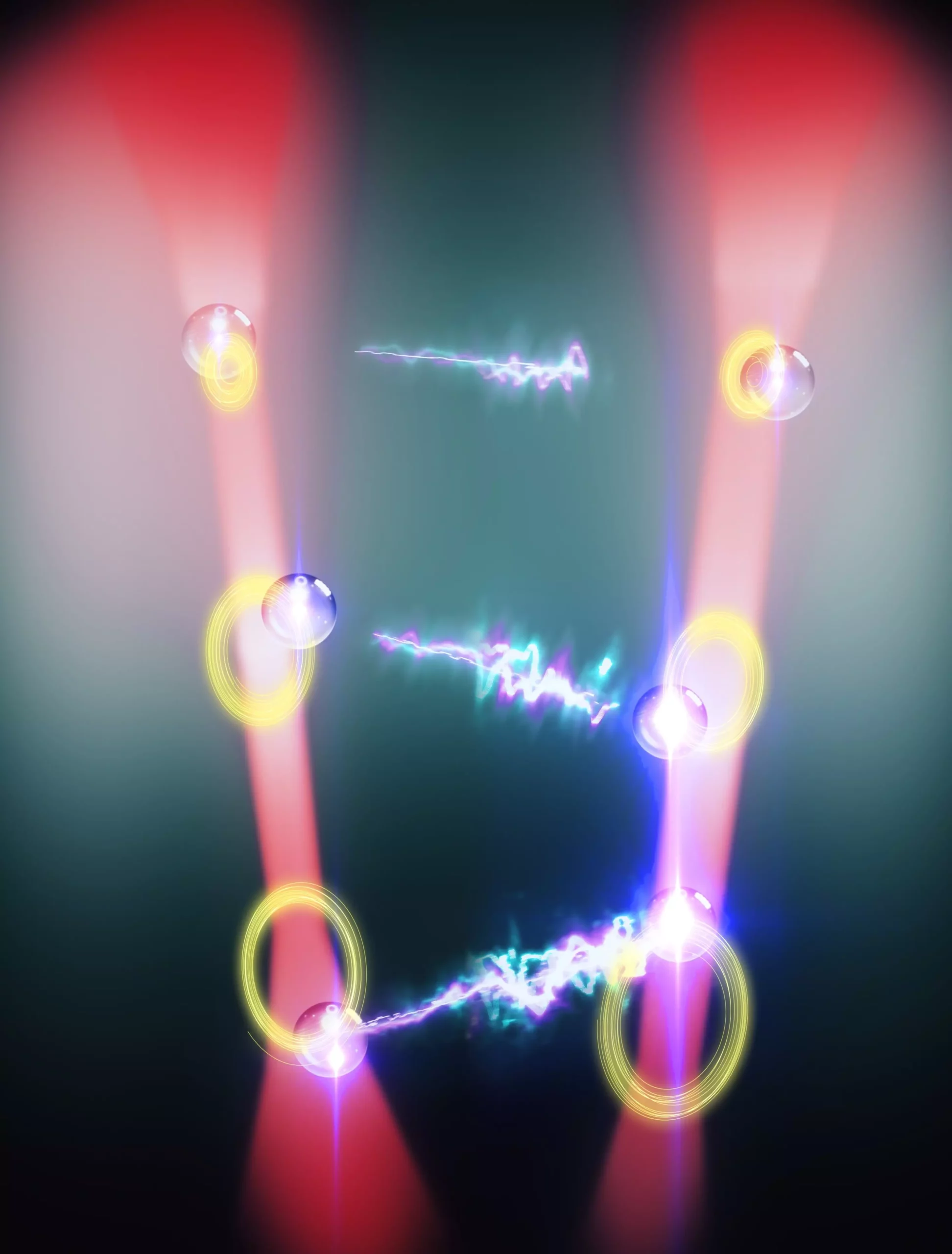In a striking advancement within the field of quantum mechanics, researchers at the University of Vienna have unveiled new dynamics involving non-reciprocal interactions using optically-trapped glass nanoparticles. This work breaks new ground by delving deeper into the mechanics of optical tweezers, a technology that has already transformed our understanding of particle interactions at the micro-scale. By integrating non-conservative forces into this framework, the study presents a fresh perspective on how non-reciprocal systems can operate, which defies traditional expectations in physics.
The foundation for this groundbreaking research was meticulously laid out in an influential paper published in *Nature Physics*. Through the use of two glass nanoparticles, the research team demonstrated non-Hermitian dynamics — a realm where conventional interaction principles are challenged. The ability to manipulate these particles with precision sheds light on collective behaviors reminiscent of predator-prey dynamics, fundamentally shifting our approach to quantum interactions.
Understanding Non-Reciprocal Interactions
At the core of this research is the concept of non-reciprocity. In classical physics, fundamental forces such as gravity and electromagnetism are reciprocal, leading to predictable interactions where either attraction or repulsion occurs uniformly. However, in more intricate natural ecosystems, these principles often lose their symmetry. The predator-prey model serves as an apt analogy — a predator’s drive to capture its prey and the prey’s instinct to flee creates a dynamic that defies simple reciprocity.
The researchers utilized this predatory analogy to develop a framework for observing non-Hermitian dynamics with nanoparticles. By applying targeted optical forces, they created environments where interactions varied based on the positioning and energy states of the trapped particles. This non-linearity is particularly exciting as it mirrors processes found throughout nature, paving the way for new applications in sensing and quantum technologies.
The Innovative Experiment
Leading the research endeavor, Uroš Delić and his team devised an innovative tabletop experiment that employed laser beam phases to exert control over interaction dynamics between the nanoparticles. By varying parameters within the experiment — such as distance between the particles and their optical environments — the researchers could create conditions favorable for non-reciprocal interactions. The excitement in the lab was palpable as Ph.D. researcher Manuel Reisenbauer likened their innovative approach to programming a computer game, reflecting the simplicity of manipulating complex quantum interactions through computational techniques.
The ingenious setup allowed the researchers to fine-tune optical forces, resulting in both constructive and destructive interferences around the trapped particles. This manipulation ignited a chase-runaway dynamic, where the motion of one nanoparticle induced a responsive motion in the other, amplifying their interaction in a feedback loop. Such discoveries not only highlight the team’s trendy control over quantum phenomena but also suggest untapped potential for crafting a myriad of practical applications.
The Significance of Observing Non-Linear Dynamics
As the researchers observed the nanoparticles transition from individual oscillators to synchronized entities, a new understanding of collective dynamics was born. The team explained the particles’ behaviors as analogous to swings — each acting independently until the introduction of anti-reciprocal interactions propelled them into a full cyclical motion. Such non-linear dynamics stand to influence multiple domains, from engineering to biology, by elucidating behaviors observed across diverse systems, such as lasers or oscillatory biological systems.
One of the most compelling aspects of the study is its suggestion that these nanoparticle systems can serve as platforms for investigating even richer behaviors in larger clusters. As mentioned, Delić and his team anticipate that their findings could lead to breakthroughs in force and torque sensing, significantly impacting both industrial applications and research methodologies in quantum physics.
Implications for Future Quantum Technologies
The implications of this research extend far beyond academic curiosity; they signify potential pathways toward enriching our technological arsenal in quantum computing and sensing. The ability to manipulate non-reciprocal forces may facilitate the design of advanced sensors that can operate in varying environments, highlighting an evolutionary leap in nanoscale interactions.
Furthermore, there is speculation about how these principles can be combined with methods aimed at engaging with the quantum regime. This convergence could foster new inquiries into non-reciprocally interacting quantum few-body systems, opening a treasure trove of possibilities within the realm of quantum mechanics. This exploration could redefine our understanding of fundamental interactions, much like the groundbreaking studies that preceded it, ushering in a new era of scientific discovery.
As researchers delve deeper into the phenomena surrounding non-reciprocal dynamics, the potential applications and implications become increasingly vast, marking an unprecedented shift in our approach to understanding and manipulating the quantum world.

